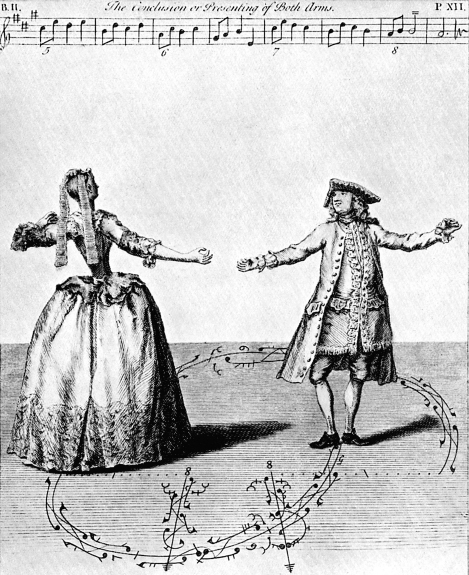Baroque and Classical Dance Form
A Baroque minuet consists of two sections; each comes to a complete stop and is immediately repeated (|: a :||: b :|). See page 132. Minuets tend to come in pairs, alternating in an A B A pattern. The second dance, B, is called the trio, because in early days it was often played by only three instruments.
As a whole, a Baroque minuet movement can be diagrammed as follows. (Remember that |: :|
| MINUET | TRIO | MINUET |
| A | B | A |
| |: a :||: b :| | |: c :||: d :| | a b |

Classical composers extended the internal form of minuets (and trios) by developing internal a b a structures according to one of the following schemes:
| MINUET | TRIO | MINUET | MINUET | TRIO | MINUET | |
| A | B | A | or | A | B | A |
| |: a :||: b a :| | |: c :||: d c :| | a b a | (more often) | |: a :||:b a′ :| | |: c :||:d c′ :| | a b a′ |
Prime marks (a′ and c′) indicate changes or extensions to the original a and c sections. Classical dance form is sometimes called ternary form, acknowledging its a b a′ order.